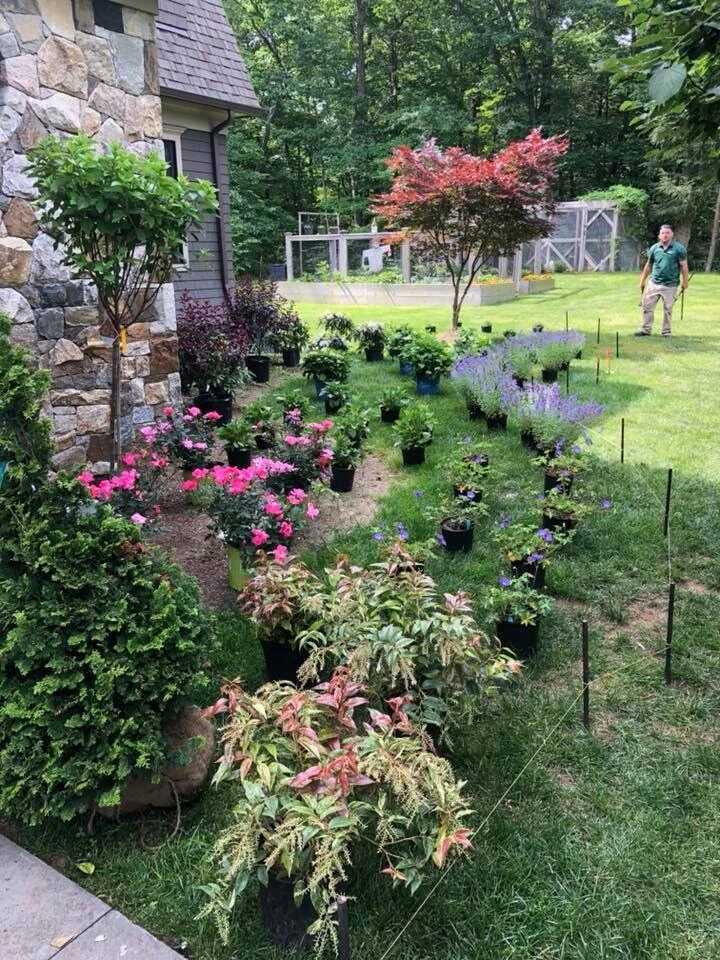Embrace the Beauty of Four Seasons
Connecticut’s vibrant four-season climate is a gift for homeowners who enjoy nature’s changing canvas. But while autumn leaves and spring blossoms are beautiful, keeping your yard looking its best can feel like a full-time job—unless you work with nature, not against it.
Whether you’re a beginner gardener or a long-time homeowner looking for simpler solutions, this article gives you a season-by-season landscaping plan that’s easy, effective, and made for Connecticut’s Zone 6 conditions. With practical advice on what to plant, when to prune, and how to care for your yard, you’ll have everything you need to enjoy a healthy, low-maintenance landscape year-round.
https://yardgoats.io/ — your go-to source for expert yard care in Connecticut.
🌱 Spring (March to May): Time to Wake Up the Yard
Spring in Connecticut is about awakening—both for your plants and your plans. As the ground thaws and days lengthen, this is the perfect season to get a jump-start on planting and cleanup.
What to Plant
- Trees and Shrubs: Early spring is prime time for planting deciduous trees and hardy shrubs like maples, dogwoods, and spirea. Install them before bud break to help establish strong root systems.
- Flowers and Bulbs: Start with cool-season flowers—think pansies, violas, and snapdragons. These can go in before the final frost (typically mid-May).
- Summer Bulbs: By May, plant dahlias, gladiolus, and cannas for vibrant summer blooms.
- Vegetables: Sow hardy crops like spinach, lettuce, and carrots directly into the soil. More tender vegetables—tomatoes, peppers, cucumbers—should be started indoors and transplanted after the final frost date.
Spring Yard Tips
- Soil Prep: Mix in compost to flower and veggie beds for nutrient-rich soil.
- Mulch: Apply a 2–3 inch layer of mulch to suppress weeds and conserve moisture.
- Divide Perennials: Daylilies, catmint, and other tough perennials can be divided and replanted now.
- Prune: Cut back winter-damaged branches and trim summer-blooming shrubs before new growth begins. Wait to prune spring-blooming shrubs (like forsythia or lilacs) until after they flower.

☀️ Summer (June to August): Keep It Growing
Connecticut summers are warm, sometimes humid, and perfect for lush garden growth—if you know how to manage the heat.
Planting in Summer
- Heat-Loving Flowers: Marigolds, zinnias, petunias, cosmos, and salvia thrive in Connecticut heat. Add these annuals for season-long color.
- Container Perennials: Container-grown daylilies, coneflowers, and black-eyed Susans can be safely planted in early summer with enough watering.
- Succession Planting: Re-sow fast-growing veggies like bush beans, radishes, or lettuce every few weeks for continuous harvest.
- Fall Veggies: Start cool-season crops like kale, broccoli, and carrots in July to harvest in the fall.
Mid-Summer Maintenance
- Watering: Water deeply once or twice a week (1–2 inches total). Early morning is best to reduce evaporation and prevent fungal issues.
- Mulch Smart: Keep roots cool and moist with fresh mulch, especially around new plantings.
- Pest Watch: Look out for aphids, beetles, and fungal spots. Use eco-friendly options like insecticidal soap or neem oil.
- Deadheading: Regularly remove spent blooms from petunias, coneflowers, and daylilies to extend flowering.
🍁 Fall (September to November): Plant for the Future
Fall may seem like the end of the gardening year, but for Connecticut homeowners, it’s a strategic season to plant, transplant, and prep for next year’s beauty.
What to Plant in Fall
- Trees & Shrubs: Cooler air and still-warm soil create ideal conditions for installing new trees and bushes. Consider native picks like serviceberry, viburnum, and winterberry.
- Bulbs: Plant tulips, daffodils, hyacinths, and crocuses now to ensure a colorful spring. Just be sure to get them in the ground before it freezes—typically by late October.
- Perennials: Divide and relocate perennials like peonies and hostas now. They’ll settle in over winter and rebound stronger in spring.
- Seasonal Color: Add mums and asters in early fall for bright fall curb appeal. Ornamental kale and pansies can handle cold snaps too.
Vegetable Garden Prep
- Cool Crops: Plant fast growers like spinach, lettuce, and arugula for autumn harvest.
- Garlic: Plant garlic cloves in October for a low-maintenance crop that matures next summer.
- Cover Crops: Sow winter rye or clover in spent garden beds to enrich the soil naturally.
Fall Yard Care
- Leaf Management: Mulch leaves with a mower or compost them—don’t send nutrients to the landfill!
- Prune Safely: Late fall is perfect for structural pruning of trees after leaf drop.
- Clean-Up: Remove diseased plants. Trim mushy perennials like hostas, but leave ornamental grasses for winter interest and wildlife.

❄️ Winter (December to February): Rest, Reflect, and Plan Ahead
While the garden sleeps, winter offers the perfect time to prepare for spring and do a little indoor gardening.
Indoor Gardening
- Start Seeds: In January and February, begin cool-season seedlings indoors—try impatiens, marigolds, and petunias under grow lights or sunny windows.
- Herbs: Basil, parsley, and microgreens thrive in small pots on kitchen windowsills.
- Maintenance: Clean and sharpen garden tools, organize seed packets, and sketch next year’s layout.
Outdoor Winter Tips
- Mulch: Insulate young trees and shrubs with extra mulch—up to 4 inches to prevent freeze-thaw damage.
- Protect Shrubs: Use burlap or shrub covers on sensitive species. Consider anti-desiccant spray for evergreens.
- Snow Watch: Gently remove heavy snow from evergreen branches with a broom to prevent breakage.
- Pruning: Dormant pruning is best now. Trim summer-blooming shrubs (like Rose-of-Sharon or butterfly bush), shade trees, and fruit trees. But leave lilacs, azaleas, and other spring bloomers alone until after they flower.
Conclusion: A Simple, Seasonal Approach to a Stunning Yard
With Connecticut’s rich seasonal palette, every homeowner can enjoy a thriving yard—without the stress. By aligning your gardening tasks with nature’s rhythm, you’ll reduce maintenance, increase success, and create a landscape that brings joy all year long.
So whether you’re prepping spring veggies, planting fall bulbs, or sipping coffee while snow rests on your evergreens, remember: the secret to a beautiful Connecticut yard is knowing what to do, when to do it, and letting nature do the heavy lifting.
